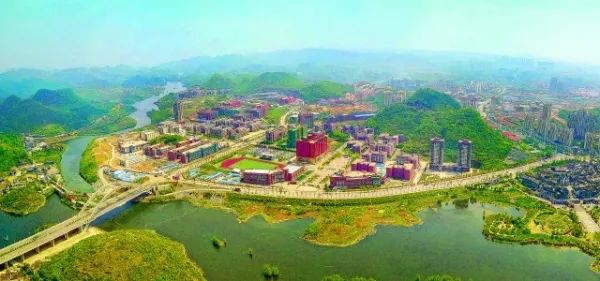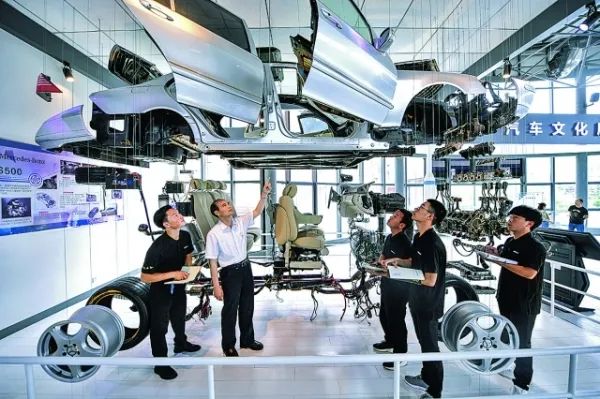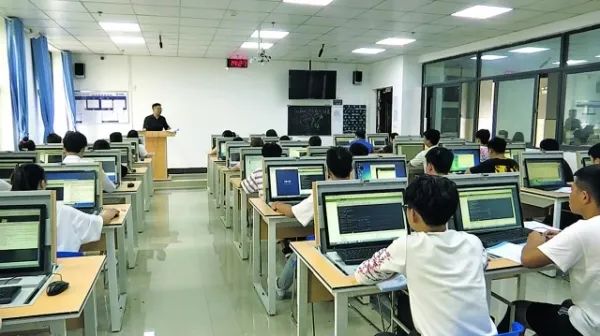Qingzhen Vocational Education City develops rapidly
The Guizhou (Qingzhen) Vocational Education City is located in northwestern Qingzhen, a county-level city in Guiyang, capital of Southwest China's Guizhou province. For more than 10 years, it has explored new ways to develop the in-depth integration of urban production, education, and landscapes, leading the development of vocational education in Guizhou.
The vocational education city is divided into two campuses, Shiguang and Xiangchou, which are divided by a river.

An aerial view of the Guizhou (Qingzhen) Vocational Education City in Qingzhen, Guiyang [Guiyang news network]
After several years of construction, the Shiguang campus is nearly complete, while the Xiangchou campus has begun to take shape.
There are currently 19 vocational colleges in the city, 15 of which have enrolled students. There are currently more than 140,000 teachers and students there, an increase of 118 percent from 2015.
Through the joint efforts of provincial, municipal, and county-level bodies, the overall spatial layout of the vocational education city has been completed, along with basic supporting services. Its aim is to become a talent hub and a scientific and technological innovation base integrating academic education, technical training, vocational guidance, and skills competitions.

Students majoring in automobiles at the Guizhou Equipment Manufacturing Vocational College take practical training courses. [Photo/Guiyang news network]
Among the colleges and universities in the vocational education city, an increasing number of projects featuring industry-education integration and school-enterprise cooperation are being undertaken.
The vocational education city offers 324 majors in vocational colleges covering primary, secondary, and tertiary industries. More than 400 enterprises have carried out school-enterprise cooperation with colleges and universities through many methods, leading to a high employment rate among students.
In addition, during the 13th Five-Year Plan period (2016-20), the vocational education city regarded vocational education as an important starting point for poverty alleviation through education.
The colleges and universities stationed there adopted training models focusing on counterparts, orders, and orientations to offer more than 100 targeted poverty alleviation classes for impoverished areas and recruited more than 40,000 students from impoverished families.
This has led to the stable employment of 20,000 graduates.

Students at the Guizhou Vocational and Technical College of Water Resources and Hydropower take a theory class. [Photo/Guiyang news network]
Presented by China Daily.
黔ICP备05001922号-3
